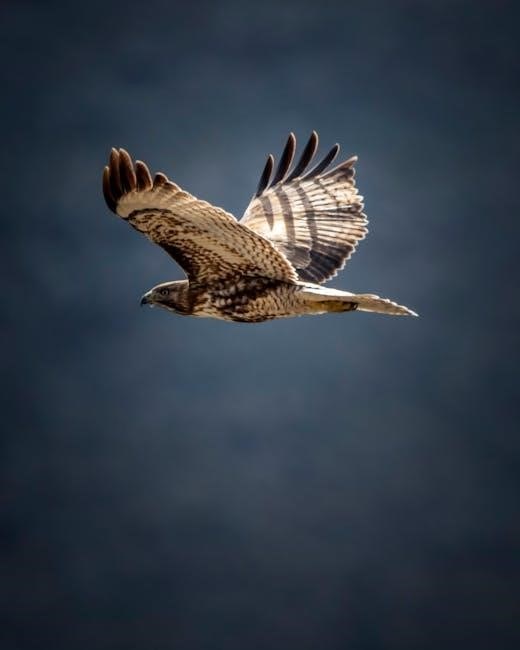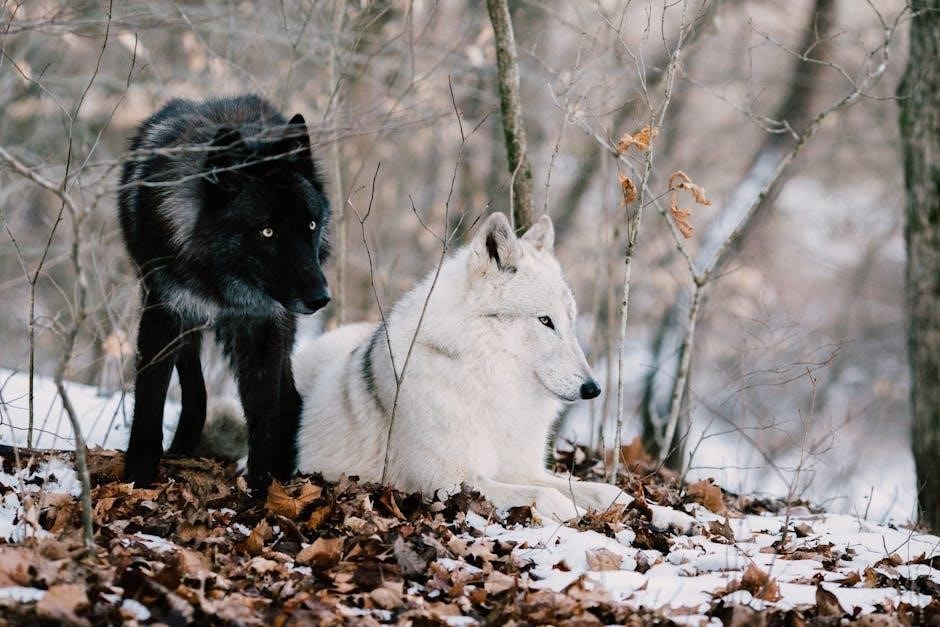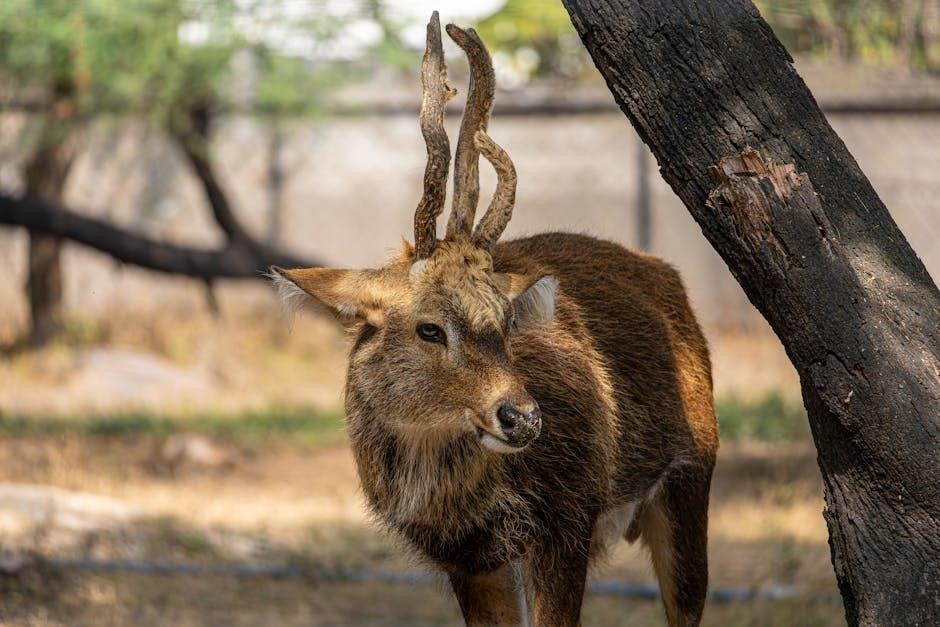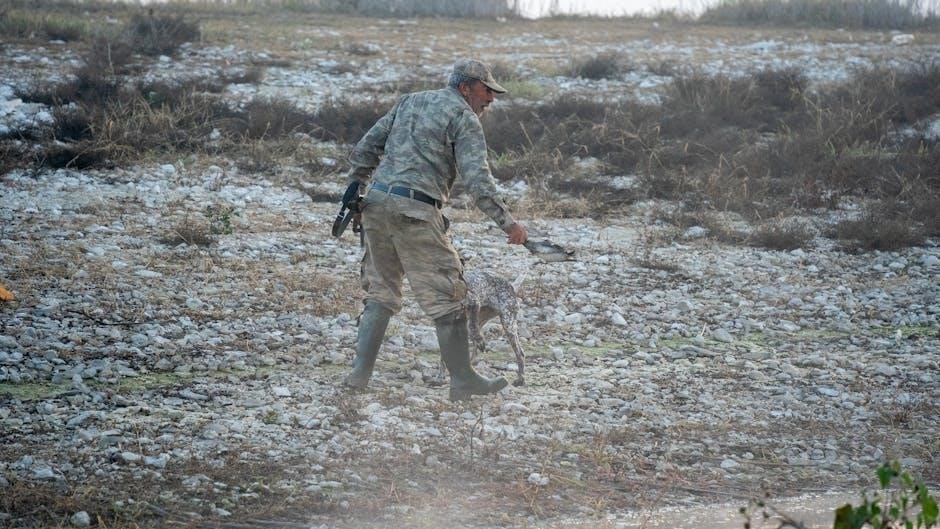Tipping hunting guides is a common practice showing appreciation for their services‚ with
- various factors influencing the amount
given to them‚ usually in the form of cash at the end.
Importance of Tipping
Tipping hunting guides is a significant aspect of the hunting experience‚ as it shows appreciation for their hard work and dedication to making the hunt a success. Guides often rely on tips as a substantial part of their income‚ and it is a way for hunters to express gratitude for the guide’s expertise and service. The importance of tipping cannot be overstated‚ as it not only reflects the hunter’s satisfaction with the guide’s performance but also acknowledges the guide’s efforts to provide a memorable and successful hunt. According to various sources‚ guides typically receive a significant portion of their income from tips‚ making it a crucial aspect of their livelihood. By tipping their guides‚ hunters can ensure that they are fairly compensated for their services and can continue to provide high-quality guiding experiences. This practice is deeply ingrained in the hunting culture and is expected of hunters as a way to show respect and appreciation for their guides.

National Tipping Customs
Various countries have unique tipping customs and
- expectations
for hunting guides‚ influencing the amount given.
United States Tipping Customs
In the United States‚ tipping hunting guides is a common practice‚ with the amount varying depending on the quality of service received. The total cost of the hunt is typically used as a guideline for determining the tip amount. A tip of 10 to 20 percent of the total cost is considered standard‚ with some hunters choosing to give more or less depending on their experience. Factors such as the guide’s expertise‚ the success of the hunt‚ and the overall satisfaction with the service can influence the amount of the tip. According to various sources‚ including hunting outfitters and guides‚ a tip of 15 percent is considered a good starting point‚ with adjustments made based on the individual’s experience. The tip is usually given to the guide at the end of the hunt‚ and it is typically presented in the form of cash. This allows the guide to use the tip as they see fit‚ and it is a way for hunters to show their appreciation for the guide’s services.
Canadian Tipping Customs
In Canada‚ tipping hunting guides is also a widespread practice‚ with hunters typically showing their appreciation for the guide’s services by giving a tip. The amount of the tip can vary‚ but it is generally recommended to tip between 15 and 20 percent of the total cost of the hunt. This amount can be adjusted based on the quality of service received and the overall satisfaction with the hunt. Canadian hunting guides often rely on tips as a significant portion of their income‚ so hunters are encouraged to be generous when determining the tip amount. The tip is usually given to the guide at the end of the hunt‚ and it is typically presented in the form of cash. This allows the guide to use the tip as they see fit‚ and it is a way for hunters to show their appreciation for the guide’s expertise and service. The Canadian tipping customs are similar to those in other countries‚ with the focus on showing appreciation for good service.
European Tipping Customs
In Europe‚ the customs surrounding tipping hunting guides are slightly different‚ with the recommended tip amount typically ranging from 10 to 15 percent of the total cost of the hunt. This amount is generally considered to be a fair reflection of the guide’s services and expertise. European hunting guides often have a strong reputation for providing high-quality service‚ and the tip is a way for hunters to show their appreciation for this. The tip is usually given to the guide at the end of the hunt‚ and it is typically presented in the form of cash. This allows the guide to use the tip as they see fit‚ and it is a way for hunters to express their gratitude for a successful and enjoyable hunt. The European tipping customs are influenced by the local culture and traditions‚ and hunters are encouraged to be respectful of these customs when determining the tip amount. The tip is an important part of the hunting experience in Europe.

Factors Influencing Tipping Decisions
Budget and quality of service are key factors influencing tipping decisions regarding hunting guides always.
Budget and Quality of Service
When determining how much to tip a hunting guide‚ budget and quality of service are crucial factors to consider. The cost of the hunt and the guide’s expertise play a significant role in deciding the tip amount. A hunter’s budget may limit the amount they can afford to tip‚ while the quality of service received can justify a more generous tip. Guides who provide exceptional service‚ such as tracking and locating game‚ setting up equipment‚ and ensuring a safe and successful hunt‚ deserve a higher tip. On the other hand‚ if the service is subpar‚ the tip may be lower. It is essential to assess the guide’s performance and the overall experience when deciding on a tip. By considering these factors‚ hunters can show their appreciation for the guide’s hard work and dedication. This approach ensures that the tip is fair and reflects the value received.

Guidelines for Tipping Hunting Guides
Guidelines for tipping hunting guides include considering the total cost and service quality‚ usually given in cash at the end of the hunt‚ showing appreciation for their services always.
Minimum Tipping Amounts

Minimum tipping amounts for hunting guides are generally considered to be around 10 percent of the total cost of the hunt. This amount can vary depending on the quality of service received and the overall experience of the hunt. In some cases‚ a minimum tip of 10 to 15 percent may be expected‚ while in other cases‚ a tip of 20 percent or more may be given for exceptional service. It is also important to consider the cost of the hunt and the level of expertise and guidance provided by the hunting guide when determining the minimum tipping amount. A tip of at least 10 percent is usually seen as a standard minimum‚ with higher tips given for outstanding service. The minimum tipping amount is usually given in cash at the end of the hunt‚ as a way of showing appreciation for the guide’s services and expertise. Cash is always preferred.
Preferred Method of Tipping
The preferred method of tipping hunting guides is in cash‚ as it allows them to directly receive the tip without any deductions or delays. This method is also seen as the most personal and direct way to show appreciation for their services. According to various sources‚ cash is always the preferred method for tipping a hunting guide‚ as it provides them with immediate and direct compensation for their work. Many guides rely on tips as a significant portion of their income‚ and cash tips allow them to use the money as they see fit. Additionally‚ cash tips can be given discreetly and personally‚ allowing hunters to express their gratitude in a tangible way. Overall‚ cash is the preferred method of tipping hunting guides‚ and it is widely accepted as the standard practice in the industry. This method is simple‚ direct‚ and effective in showing appreciation for a guide’s services.
